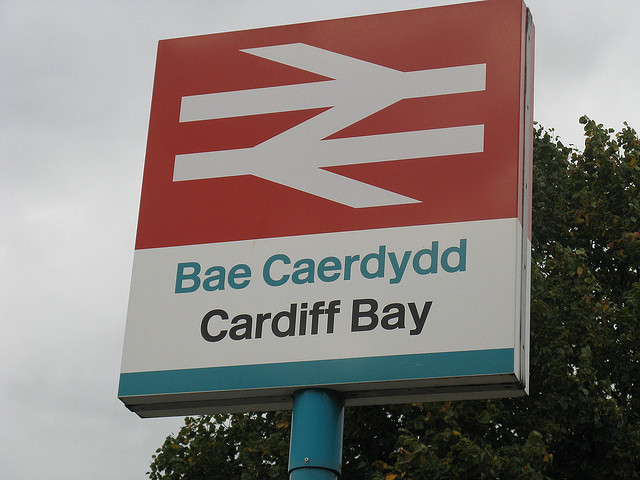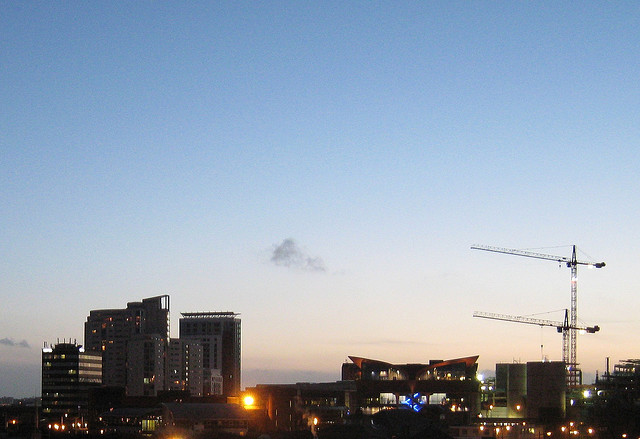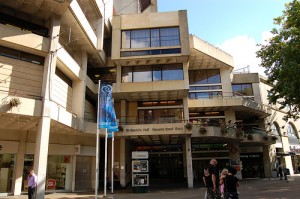Yn ddiweddar darganfyddais artist sydd heb fy nghyffroi gymaint ers os pys. Digwydd gwylio rhaglen ddogfen a gweld rapiwr ‘gwleidyddol’ o’r enw Lowkey. Dyma ni eto efallai byddwch yn meddwl, ond dyma pam credaf fod cerddoriaeth gwleidyddol mor bwysig.
Does dim modd gwadu’r ffaith fod gwleidyddiaeth yn rheoli bywydau pob un ohonom, o ein hiechyd, ein haddysg i’n swydd (neu’r ffaith does dim swyddi). Mae cerddoriaeth sydd ‘ddim yn wleidyddol’ canol y ffordd ddim yn dianc rhag fod yn rhyw fath o ddatganiad gwleidyddol yn eu hun. Mae cerddoriaeth o’r fath yn meithrin apathi a gyrru’r neges i bawb fod y ffordd y mae pethau’n gweithio yn bresenol yn y byd yn rhywbeth dylwn fodloni arno. Sut all unrhywun call dderbyn hyn os ynt yn gwynebu gwirionedd erchyllderau tlodi ac argyfwng ecolegol y ddaear, a’r holl beth mor ddiangen? Mae pob cerddoriaeth yn wleidyddiol, yn ymwybodol neu anymwybodol.
Engrhaifft o’r perthynas rhwng gwleidyddiaeth a cherddoriaeth yw’r modd mae rhai fel wedi beio cerddoriaeth hip hop am y terfysgoedd diweddar (e.e. David Starkey ar Newsnight). Mae ymateb llawer o bobol i’r terfysgoedd wedi bod yn ddychrynllyd. Sut all pobol ddim gweld bod ceisio deallt be achosodd y terfysgoedd ddim yn golygu eu bod yn cytuno a hyn a wnaeth llawer o’r terfysgwyr? Mae hen ddywediad Affricanaidd yn hynod weddys yn y cyd destyn yma: ‘If young men are not initiated into the village, they will burn it down – just to feel its warmth’.
Ar ôl blynyddoedd o’r tabloids a papurau asgell dde (daiff dyfyniad Malcom X i’m meddwl yma ‘If you’re not careful, the newspapers will have you hating the people who are being oppressed, and loving the people who are doing the oppressing.’), a hyd yn oed adloniant ysgafn fel Jeremy Kyle son am yr ‘is-ddosbarth’ mewn modd mor ffiaidd, am ir (er mai cyfalafwyr a bancwyr yw’r problem go iawn) does dim rhyfedd bod pobol fel hyn ddim yn teimlo fel rhan o’m cymdeithas.
Dyma top 5 Lowkey, oedd torri nhw lawr yn uffar o job… Nes i ysgrifennu mwydradau hirfaeth am y traciau yma, maent yn anhygoel dim ond i’w dileu ar ol sylweddoli maent yn siarad drost eu hunain a diflas yw bw dwi’n ei hysgrifennu amdanynt.
Maent i gyd eithaf ‘gwleidyddol’ ond hefyd mae traciau ynglun a theimladau personol fel Bars for my Brother (ble mae’n galaru am ei frawd a gyflawnwyd hunan laddiad). Mae rap fel Who Really Cares? yn un personol a emosiynol hefyd ond yn cyfuno teimladau yr unigolyn a ei ymwybyddiaeth o ddioddefaint byd eang mewn cyd destyn gwleidyddol. Dyma ni ta waeth:
Revolution Music
Who Really Cares
Fideo ar YouTube
One World
Bars for my Brother
Fideo ar YouTube
Alphabet Assassin
Does dim byd tebyg i glywed cerddoriaeth dachi’n teimlo sydd ar yr un tonfedd a’ch ymenydd a’r un curiad a’ch pyls mor roquefort drewllyd o gawsllyd a ma’n swnio.



